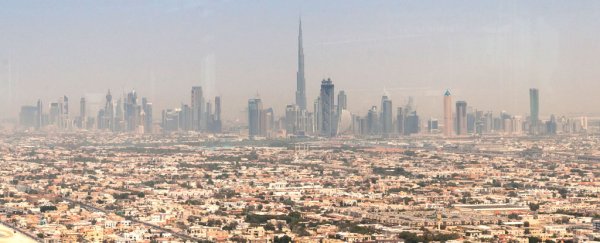The United Nations Climate Change Conference 2015 is set to begin in Paris this month, and while much of the world's attention is focused on the dangers of rising sea levels, the very thing that's making the oceans swell – higher temperatures – is forecast to have deadly effects of its own in other parts of the world.
A new study modelling temperature rise in the Persian Gulf says climate extremes in the region may hit deadly levels by the end of this century if nothing is done to significantly mitigate greenhouse gas emissions. However, if the international society is able to move away from a 'business as usual' approach, curbed emissions could stall the onset of such dangerous heats.
The findings, published in Nature Climate Change, detail how the combination of heat and humidity in the Persian Gulf makes the area extremely susceptible to the danger of rising temperatures, with the researchers calling it "a specific regional hotspot where climate change, in absence of significant mitigation, is likely to severely impact human habitability in the future."
Using high-resolution computer versions of standard climate models, the researchers from the Massachusetts Institute of Technology and Loyola Marymount University found that heat spikes in several cities throughout the Middle East – including Doha in Qatar, Abu Dhabi and Dubai in the United Arab Emirates, and Bandar Abbas in Iran – could surpass a wet-bulb temperature of 35 degrees before the end of this century.
Wet-bulb temperature recordings take into account humidity in addition to standard temperature, and a 35 degrees Celsius wet-bulb temperature is believed to be the limit of human survivability, as excessive humidity at that point prevents sweat from effectively cooling down the human body. People can survive in such heat, but only for a matter of hours.
To the researchers' knowledge, this 35 degrees Celsius wet-bulb temperature threshold has never been passed on Earth, although we've gotten close. Bandahr Mashrahr in Iran recorded a wet-bulb temperature of 34.6 degrees Celsius earlier in the year during a particularly hot week-long heat wave.
If the researchers' findings are correct, these kinds of heat spikes will become more and more common in the Persian Gulf during the latter part of the 21st century, occurring several times over a 30-year period – provided significant efforts to curb greenhouse gas emissions do not eventuate.
It's possible that those in relatively rich or well-developed cities like Dubai and Abu Dhabi would be able to shelter extreme heat waves via air-conditioning and climate-controlled buildings, but for those outside – or people without access to such comforts, including the poor – it's expected that heat spikes in the Persian Gulf will have lethal consequences.
Let's hope our national leaders in Paris bear such truly frightening possibilities in mind when they're negotiating a new climate deal on behalf of the world's peoples in just one month's time.

